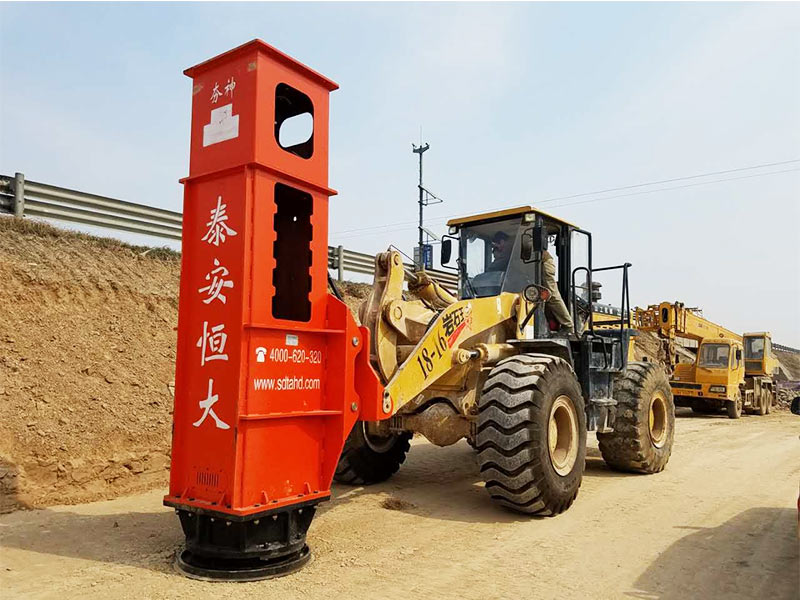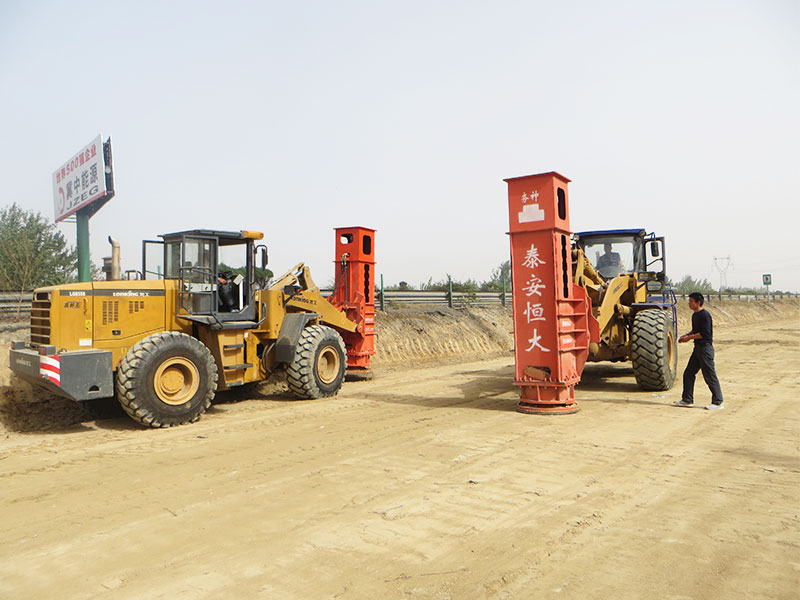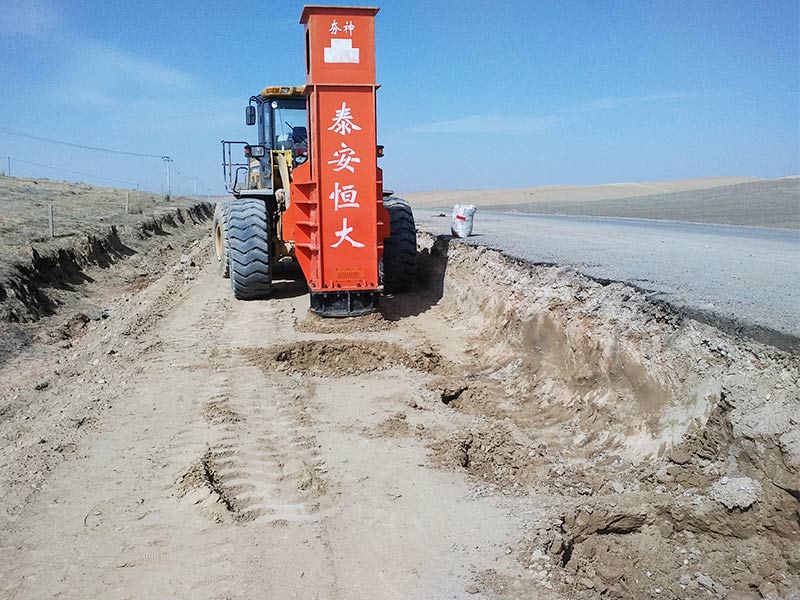What is a rapid impact compactor for a loader? How to operate the rapid impact compaction machine modified by the loader?
updatetime:2022-08-31 09:19:55 pageviews:332views
In the construction process of road and subgrade engineering in my country, when backfilling the back of the bridge pier and abutment, it is usually performed after the basic construction of the structure is completed. It is necessary to add sufficient compactness to the roadbed project. However, due to the relatively narrow construction scope of the back of the drainage project, the application of large and medium-sized compaction machinery is very easy to cause damage to the surrounding subgrade engineering structures. The difficulty level is high. The loader hydraulic ramming technology can solve this problem well.

Loader modified loader rapid impact compactor lifts the rammer to a certain height according to the hydraulic cylinder, and then quickly releases it, and it descends faster under the same action as the hydraulic accumulator, and the rammer falls behind and knocks on the device equipped with it. The negative pressure of the shock-absorbing rubber pad is applied to the ramming plate on the road surface, and the longitudinal impact force is transmitted to the ramming plate, and the road surface is vigorously rammed according to the ramming plate.
The rapid impact compactor of the loader is connected to the boom of the general loader. Using the movement of the loader and the operational flexibility of the boom, the rapid impact compaction machine of the loader can compact different working parts, and can also shoot or continuously shoot the construction road. It is suitable for engineering projects with such a narrow construction surface at the back of bridge culverts. The use of this technology can reasonably strengthen the compactness of the subgrade project at the bottom of the bridge, prevent the damage to the vicinity of the subgrade project caused by the excessive impact force of the rammer, and then reasonably solve the safety hazard of jumping at the bridge head.

Precautions for the operation of rapid impact compaction equipment
1. The rapid impact compactor operator of the loader needs to hold a certificate, and it is strictly forbidden for non-technical drivers to operate. Do not leave the post without permission, and do not operate machinery and equipment that is inconsistent with the operating license. It is strictly forbidden to hand over the industrial equipment to the staff who do not have the operation certificate of the machine. Drunk operation is strictly prohibited;
2. Before each operation, check whether the grease, gasoline, diesel and water are sufficient, whether various instrument panels are normal, whether the transmission device and equipment in operation are in good condition, and whether the hydraulic transmission system and its pipelines are free of leakage. Leakage condition, after confirming that everything is normal, it can be run;
3. The operating staff must strictly abide by the inspection rules and regulations before work and pay attention to observation and inspection and maintenance rules and regulations after work in accordance with the requirements of the machine instructions;
4. The cab or operation room of the rapid impact compaction equipment of the loader should be kept clean and tidy, and it is strictly forbidden to store flammable, flammable and explosive objects. It is strictly forbidden to wear sandals, smoke and work while intoxicated. It is strictly forbidden to run with common faults or overloading of the hydraulic rammer belt of the loader;
5. When the rapid impact compaction of the loader is placed on the construction site, the location should be selected, the door of the car cab (operating room) should be closed, and the vehicle brake should be pulled. When parking on a slope, use a triangular wood or stone against the wheel. There should be full-time staff to take care of at night;

6. For mechanical equipment using cooling water, when the temperature is less than 0 °C, water should be added immediately after work, or other cold-proof measures should be adopted to avoid freezing of the human body;
7. During construction, it is necessary to first carry out signs to the obstacles on the ground, and send full-time personnel to guide the construction of the rapid impact compaction machine of the loader to ensure the safety of the obstacles and industrial equipment;
8. Before the rapid impact compaction equipment operation of the loader, the operator and the construction team leader must carry out all-round study, training and mastery of the specific content of the technical disclosure of the project leader. If they do not understand or are unclear, they should immediately ask. Among them, the operator and the construction team leader must clearly remember the type and location of the roadblocks on the ground, on the ground and in the high altitude of the work site (the specific content includes: the height of the filling excavation, the slope rate, the underground cable, the surrounding cable Line height, various pipelines, pits and various obstacles, etc.), construction in this part must follow the instructions of the construction team leader, and it is strictly forbidden to operate without command;
9. During the operation period, non-construction workers are strictly prohibited from entering the construction area, and construction workers are strictly prohibited from chasing and making trouble when they enter the construction site;
10. When man and machine cooperate with each other in construction, the staff is prohibited from standing on the work surface carried out in front of the mechanical equipment, and must stand outside the working surface of the mechanical equipment. To remove behind the vibratory roller, it is strictly forbidden to move backward along the correct direction of the rapid impact compaction machine of the loader, so as to avoid personal safety and production accidents caused by falling back when moving backwards.

